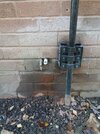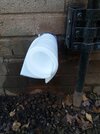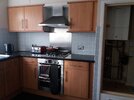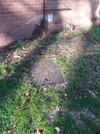Our condensate pipe goes outside. Yesterday we put some bubble wrap round the pipe but there was a 10 cm icicle hanging on it this morning. There was also some ice in the pipe which melted after having used warm water from a kettle on it. All the nearby shops are out of proper insulation material and I put some different insulation round the pipe for now. Hopefully will get some proper pipe insulation tomorrow. Should we extend the pipe with a downwards bend? We are in a block of flats there is no way of having the pipe draining inside. The boiler is working.
Thanks for your help.
Thanks for your help.





